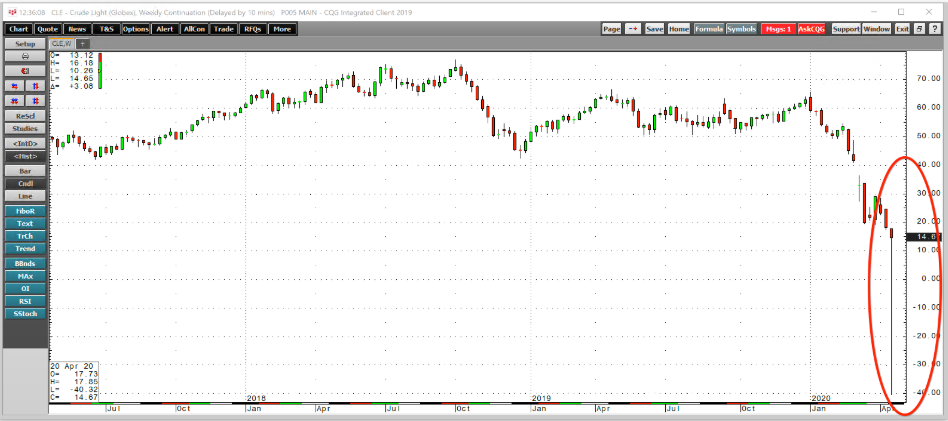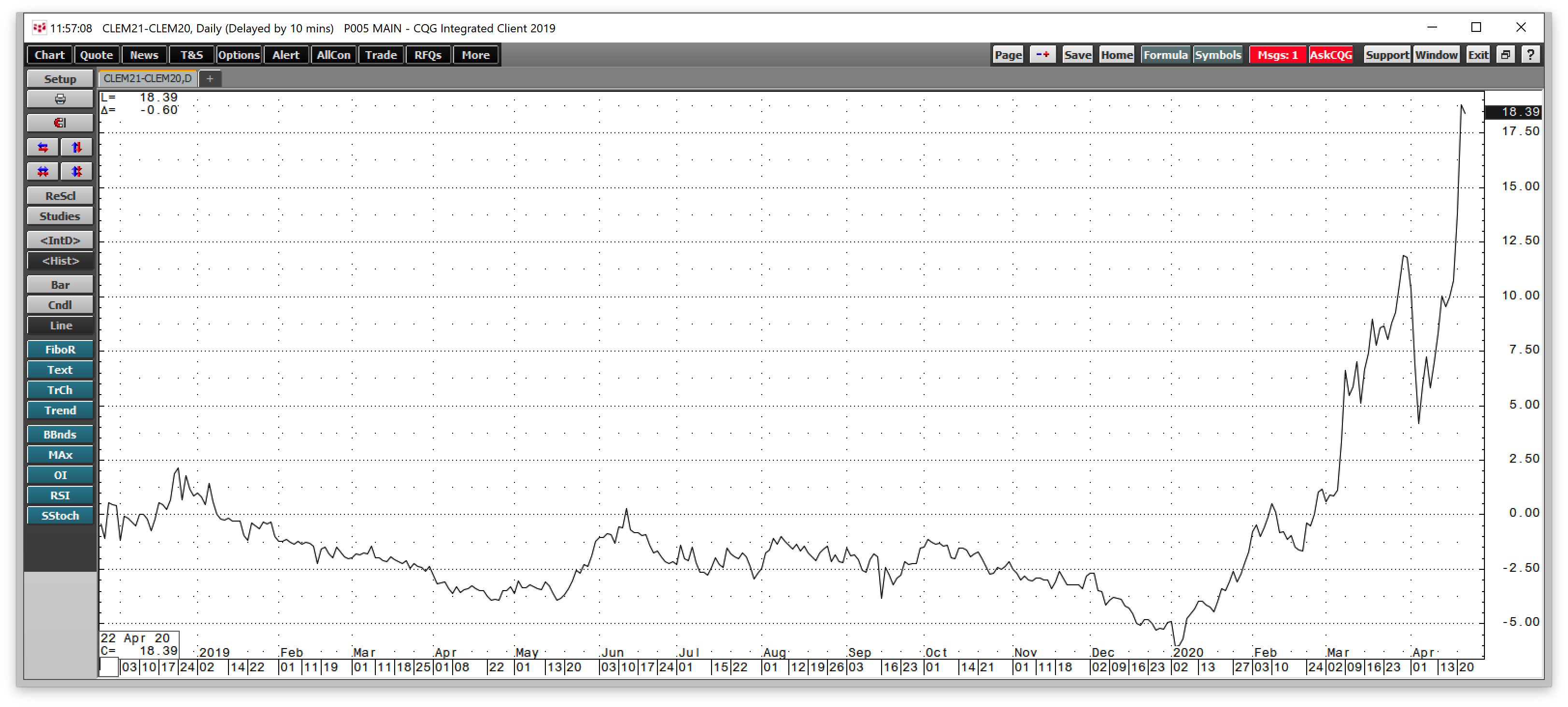This post was written exclusively for Investing.com
- Oil's dramatic example educated traders
- Electricity has gone negative, and natural gas has the potential
- The put-call option relationship in commodities can help protect traders
The Chicago Mercantile Exchange is the world’s leading commodities futures market. In the 1950s, around 20% of the CME’s daily volume was in the onion futures market. In 1958, US regulators banned trading in onions because of market manipulation that caused financial problems for producers and consumers of the root vegetable. In 1955, the price of onions fell below zero, which likely led to its delisting.
Commodity prices can indeed fall below zero, which is a challenging concept for many market participants. Over recent years, we have become accustomed to negative interest rates, where banks charge for deposits. Because a commodity is an asset, the notion of paying another market participant to take delivery is alien to even experienced commodities traders.
I began my career in the raw material markets in the early 1980s. I have learned to expect the unexpected when assessing the risk of a long or short position. Before last week, the price of nearby NYMEX crude oil futures never traded below the 1986 low of $9.75 per barrel.
Many market participants believed that the price would never drop below zero. But a seasoned commodities trader never says never, and always makes sure they're protected.
Oil: Another dramatic example last week
The price of nearby NYMEX crude oil futures reached a high of $65.65 per barrel on January 8 on the back of hostilities between the US and Iran in the Middle East. Since then, the price has fallen.
In early March, a combination of declining demand because of the spread of coronavirus, together with OPEC and Russia’s decision to abandon production quotas sent the price to just below the $20 per barrel level for the first time since 2002.
The self-induced coma in the worldwide economy caused crude oil inventories to rise and demand to grind to a halt. OPEC, Russia, and other world petroleum producers, including the US, agreed to cut production by 9.7 million barrels per day, but it was not enough. As the May NYMEX contract neared expiration, the price fell below the previous all-time modern-day low of $9.75 per barrel from 1986 on April 20. On that same day, the price reached zero.
Some market participants likely purchased May futures at or near zero, assuming that they were buying at a price that was the sale of the century. They turned out to be tragically wrong.

Source, all charts: CQG
The weekly chart illustrates that crude oil fell to a low of negative $40.32 per barrel on April 20 in a market that became a bearish hot potato. The problem in the oil market was and continues to be that there is nowhere to put the oil as storage facilities are overflowing with the commodity.
Historically, oil traders with access to capital purchased nearby futures and sold deferred contracts at times when contango, for the future premium, was at high levels.

The chart of June 2021 minus June 2020 NYMEX crude oil futures, above, highlights that the one-year spread rose to $13.80 per barrel on April 20 and was at over $18 at the end of last week. The theory behind owning the nearby contract and selling the deferred contract is that those who can store and finance the energy commodity have no risk.
Holders of the spread hedge the price risk with the sale of the deferred contract and own the physical in case the market tightens. At the same time, speculators often synthesize the cash and carry trade using nearby and deferred futures without the ability to store the energy commodity, which got them into more than a little trouble when the price of the nearby futures contract in May dropped to over negative $40 per barrel on April 20.
Electricity has gone negative, natural gas has the potential: why do some markets go sub-zero?
Negative commodity prices are nothing new, as other raw materials have declined to levels where sellers pay buyers to take a commodity off their hands. While some markets have experience with zero or negative prices, others have not experienced the phenomenon.
Aside from onions, another futures market has traded at or below a zero price. The power or electricity market is a use-it or lose-it market. Electric power runs along transmission lines, and if not consumed by a party that holds a long position, it becomes worthless or can even trade at a negative price. Natural gas is another market where storage capacity can disappear, leaving the price with the potential to go negative.
The put-call option relationship in commodities: mind the skew
Any market participants holding over-the-counter short put positions in crude oil tied to the May futures price on April 20 found themselves in a situation they had never dreamed possible. Those that assumed that the downside risk of a short put position was limited to zero received a costly shock when the price reached negative $40 per barrel.
We learned two lessons courtesy of the crude oil market on April 20. First, supply capacity is the critical factor for any market participant holding a long position in a nearby futures contract. Without the ability to take delivery and store the commodity, the potential for negative prices assumes that the downside is limited to zero, which is wrong.
As of April 2020, the modern-day record low in the NYMEX natural gas futures contract was at $1.02 per MMBtu in 1992. For natural gas traders, April 20, 2020 in the crude oil market, could change future assumptions when calculating the downside potential for the other energy commodity.
The other lesson learned will change the way quantitative traders measure option risk. In the past, call options often carried a slightly higher premium compared with put options when equally distant from a strike price.
Many market participants assume that the upside is unlimited as prices can rise to infinity, while the downside is limited to zero. After April 20, 2020, market participants will look at short put options in a new light when it comes to risk. Without the ability to store and finance a commodity, the downside risk is as unlimited as the upside.
A negative price for a commodity may seem illogical, but that does not mean that it is not impossible.
